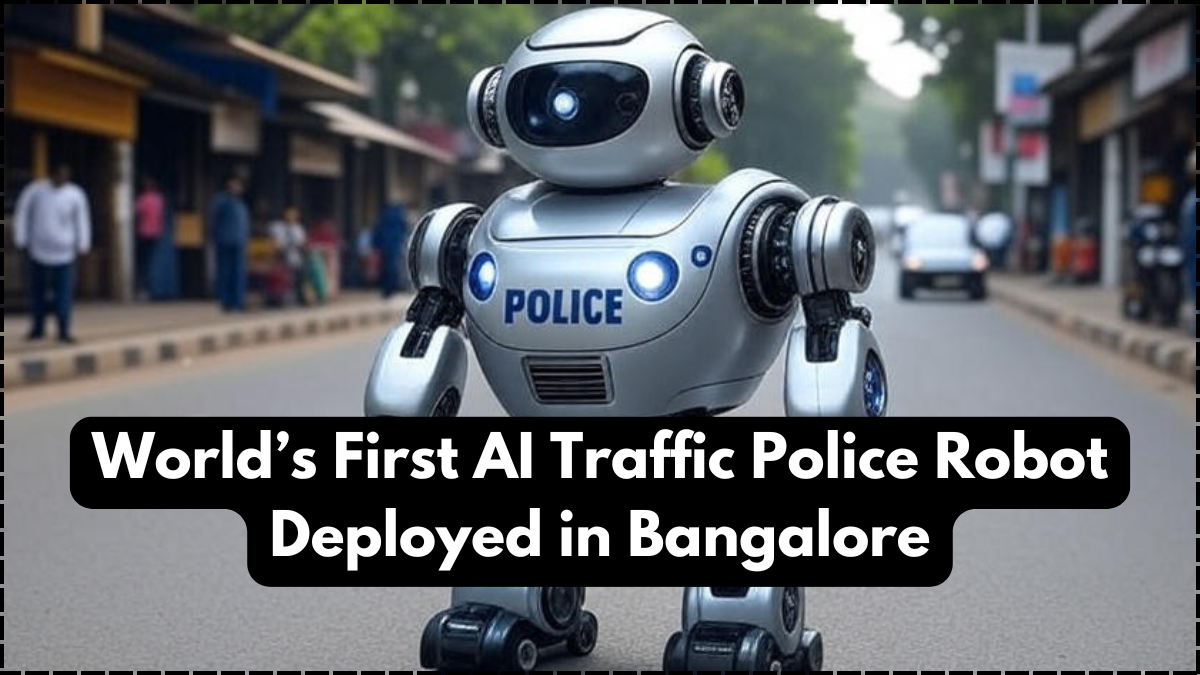The launch of the AI traffic police robot in Bangalore has set a global benchmark in technology-driven governance. This landmark innovation marks the first time a city has deployed an autonomous robot to regulate traffic, enhance safety, and support law enforcement in real time. For Bangalore, already recognized as the tech capital of India, this development reinforces its growing reputation as a hub for Smart cities initiatives.
Urban mobility has been a long-standing challenge for metropolitan regions. With increasing vehicles and limited infrastructure, Bangalore has often struggled with congestion and traffic violations. The AI traffic police robot offers a futuristic solution by combining artificial intelligence, robotics, and machine learning to create a smarter, safer city.

Features of the AI Traffic Police Robot
The AI traffic police robot comes with advanced technology designed for Smart cities. Key features include:
- 360-degree surveillance cameras for monitoring traffic flow
- AI-driven sensors to detect traffic violations instantly
- Automated ticketing system linked to vehicle registration databases
- Voice assistance for giving instructions to pedestrians and drivers
- Solar-powered energy system for eco-friendly operation
These features not only ensure efficient traffic management but also reduce the need for manual policing in congested junctions.
How It Improves Traffic in Smart Cities
The integration of the AI traffic police robot represents a major leap in Smart cities planning. Its deployment helps in:
- Reducing manual workload of human police officers
- Cutting down road accidents through quicker detection of violations
- Streamlining fine collection with instant digital challans
- Offering real-time data analytics for better city planning
- Enhancing safety for pedestrians with automated alerts
By integrating with Bangalore’s digital infrastructure, the AI traffic police robot provides authorities with data that can be used to manage peak hours, adjust signal timings, and reduce bottlenecks.
Comparison of Traditional Policing vs AI Robot Policing
| Aspect | Traditional Policing | AI Traffic Police Robot |
|---|---|---|
| Monitoring Capacity | Limited to human observation | 24/7 real-time surveillance |
| Efficiency | Dependent on manpower | Automated and consistent |
| Ticketing | Manual and time-consuming | Instant digital challans |
| Integration with Smart Cities | Low | Fully integrated with urban tech |
| Cost Over Time | High recurring costs | Lower after initial investment |
This table highlights how the AI traffic police robot not only improves efficiency but also aligns perfectly with Smart cities goals of sustainability and digital integration.
Public Response and Impact
The citizens of Bangalore have shown mixed reactions to this innovation. While many appreciate the efficiency and fairness of the AI traffic police robot, others are concerned about privacy and over-dependence on machines. However, experts believe the long-term impact will be largely positive, with reduced congestion, fewer accidents, and more discipline on the roads.
Smart cities initiatives rely on such technological solutions to make urban life smoother. With Bangalore leading the way, other Indian cities are expected to adopt similar robots in the coming years.
Conclusion
The introduction of the AI traffic police robot in Bangalore is a milestone achievement for both technology and urban governance. By blending artificial intelligence with traffic management, Bangalore has demonstrated how Smart cities can leverage innovation to tackle age-old urban challenges. As cities around the world search for sustainable and efficient mobility solutions, the success of this AI traffic police robot will likely inspire a new wave of technology-driven urban transformation.
FAQs
What is the role of the AI traffic police robot in Bangalore?
It monitors traffic, detects violations, issues digital challans, and provides real-time updates to improve road safety.
How does the AI traffic police robot support Smart cities?
It integrates with urban digital infrastructure to streamline traffic management and provide data-driven insights for city planning.
Can the AI traffic police robot replace human officers?
No, it complements human officers by handling repetitive tasks, while humans focus on complex law enforcement duties.
Is the AI traffic police robot eco-friendly?
Yes, it is designed with solar-powered systems, making it energy-efficient and aligned with Smart cities sustainability goals.
Will other cities in India adopt this technology?
Yes, several cities are monitoring Bangalore’s success, and the AI traffic police robot is expected to expand across India in the near future.
Click here to learn more